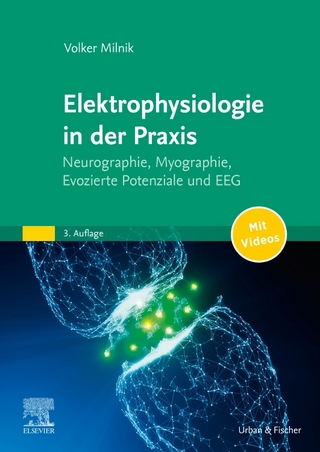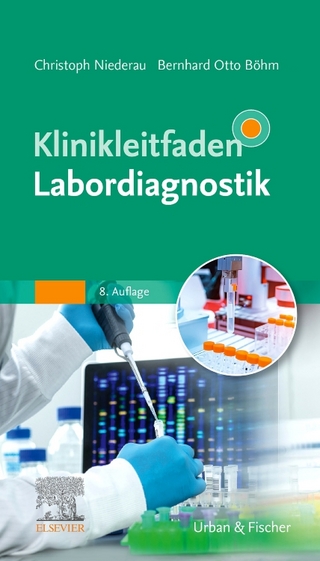
Cancer Biomarkers
Wiley-Interscience (Verlag)
978-0-471-74516-7 (ISBN)
Tools, techniques, and progress in cancer biomarkers discovery
The completion of a number of gene sequencing projects, recent advances in genomic and proteomic technologies, and the availability of powerful bioinformatics tools have led to promising new avenues and approaches in the search for cancer biomarkers. This book provides a comprehensive overview of current methodologies and technologies. It discusses biomarker discovery as a whole, rather than focusing on one specific marker or cancer. With information on both existing and potential biomarkers, Cancer Biomarkers: Analytical Techniques for Discovery:
* Provides insights into the current technological platforms for biomarker discovery, including mass spectrometry combined with multidimensional chromatography, DIGE, and various chip technologies
* Includes a detailed discussion of protein networks and protein phosphorylation in cancer
* Details the use of imaging mass spectrometry, laser capture microdissection, serial analysis of gene expression, enzyme-linked immunosorbent assays, protein microarrays, antibody-based microarrays, and bioinformatics
* Covers the emerging role of surface-enhanced laser desorption ionization (SELDI) and various tagging and labeling strategies
* Discusses related regulatory and ethical issues
With a wealth of information that can be applied to a broad spectrum of biomarker research projects, this is a core reference for biomarker researchers, scientists working in proteomics and bioinformatics, pharmaceutical scientists, oncologists, biochemists, biologists, and chemists.
MAHMOUD H. HAMDAN, PhD, FInstP, is the head of the Mass Spectrometry and Separation Technologies Laboratory at GlaxoSmithKline in Verona, Italy. He is a coauthor of Proteomics Today: Protein Assessment and Biomarkers Using Mass Spectrometry, 2D Electrophoresis, and Microarray Technology, also from Wiley.
Preface. Acknowledgments.
Introduction.
1 Overview.
1.1. Introduction.
1.2. Cancer Biomarkers.
1.3. Phases of Biomarkers Development.
1.4. New Approach to Biomarkers Discovery.
1.4.1. New and Powerful Technologies.
1.4.2. Promising Sources for Biomarkers.
1.4.2.1. DNA Methylation.
1.4.2.2. Mitochondrial DNA Mutations.
1.4.2.3. Phosphatidylinositol-3 Kinases (PI3Ks).
1.4.2.4. Profi ling Tyrosine Phosphorylation.
1.4.2.5. Proteins Expression.
1.5. Initiatives Relevant to Biomarkers Discovery.
1.5.1. Initiatives of the Human Proteome Organization (HUPO).
1.5.2. Data Mining in Cancer Research.
1.6. Concluding Remarks.
References.
2 Proteomic Platforms for Biomarkers Discovery.
2.1. Surface Enhanced Laser Desorption Ionization.
2.1.1. Some Basic Considerations.
2.1.2. Protein Capture Surfaces.
2.1.3. Enrichment/prefractionation Prior to SELDI Analysis.
2.1.3.1. Combinatorial Affi nity.
2.1.3.2. Magnetic Beads.
2.1.3.3. Stacked Sorbents.
2.1.3.4. Organic Solvent Extraction.
2.2. Bioinformatics in SELDI.
2.3. Some Representative SELDI Applications.
2.3.1. Addressing Reproducibility in SELDI Analysis.
2.3.2. Limitations and Other Open Questions Regarding Current SELDI.
2.3.3. Other Open Questions.
2.3.4. Outlook.
2.4. Two-dimensional Polyacrylamide Gel Electrophoresis.
2.4.1. Sample Preparation.
2.4.2. Reducing Sample Complexity.
2.4.3. Various Nomenclatures In-gel Analysis.
2.4.3.1. Multiple-gels Two-dimensional Analyses.
2.4.3.2. Two-dimensional DIGE Analysis.
2.4.3.3. Multiphoton Detection Imaging.
2.4.3.4. Stable-isotope Labeling with Amino Acids in Cell Culture (SILAC).
2.5. Laser Capture Microdissection.
2.6. MS Analysis of Gel-separated Proteins.
2.7. Representative Applications of 2-DE for Biomarkers Discovery.
2.8. Protein Microarrays.
2.8.1. Analytical Protein Microarrays.
2.8.2. Substrates and Protein Attachment Methods.
2.8.3. Detection Strategies.
2.8.3.1. Surface Plasmon Resonance (SPR).
2.8.3.2. Atomic Force Microscopy (AFM).
2.8.3.3. Enzyme-linked Immunosorbent Assay (ELISA).
2.8.3.4. Radio Isotope Labeling.
2.8.3.5. Fluorescence Detection.
2.8.4. Functional Protein Microarrays.
2.8.5. Reverse-phase Protein Microarrays.
2.8.6. Future Prospects.
2.9. Multidimensional Liquid Chromatography Coupled to MS.
2.9.1. Protein Labeling.
2.9.2. Labeling a Specifi c Amino Acid.
2.9.3. Stable Isotope Incorporation.
2.9.4. Limitations of Labeling.
2.10. Chromatographic Separation.
2.10.1. Three Dimensional Separation.
2.10.2. Two-dimensional Chromatography.
2.10.3. Basic Considerations Regarding MudPIT.
2.10.4. Mass Spectrometry and Data Analysis.
2.10.5. Data Analysis and Interpretation.
2.10.6. Application of Multidimensional Chromatography/MS.
2.10.7. Outlook for Multidimensional LC/MS.
2.11. Imaging Mass Spectrometry.
2.11.1. Tissue Preparation and Matrix Application.
2.11.2. MS Acquisition.
2.11.3. Some Representative Applications of Imaging MS.
2.11.4. Current Limitations and Potential Developments.
References.
3 Some Existing Cancer Biomarkers.
3.1. Introduction.
3.2. Historic Glimpse at PSA.
3.3. Prostate-specifi c Antigen.
3.4. PSA as a Screening Marker.
3.5. Improving the Specifi city of PSA.
3.5.1. Free/Complexed PSA.
3.5.2. PSA Isoforms.
3.5.3. Impact of Age, Race, and PSA Velocity.
3.6. Looking for Other Solutions.
3.6.1. Genetic Alterations.
3.6.2. Phosphorylated Akt.
3.7. Concluding Remarks.
3.8. Existing Biomarkers for Ovarian Cancer.
3.8.1. Genetic Disorder and Increased Risk of Ovarian Cancer.
3.8.2. Association of BRCA1 and BRCA2 with Cancer-susceptibility.
3.8.3. p53 Mutations in BRCA1-linked and Sporadic Ovarian Cancer.
3.8.4. Carcinoma-associated Glycoprotein Antigen (CA-125).
3.8.5. Potential Uses of CA-125 in Prognosis and Patient Management.
3.9. Osteopontin.
3.9.1. Human Kallikrein 10.
3.9.2. Prostasin.
3.10. Combination of CA-125 with Other Potential Biomarkers.
3.11. Profi ling Proteins and Gene Expression in Ovarian Cancer.
3.12. General Observations.
References.
4 Potential Cancer Biomarkers.
4.1. Introduction.
4.2. Human Tissue Kallikreins.
4.2.1. Background and Nomenclature.
4.2.2. Gene Locus and Gene Organization of Human Kallikreins.
4.2.3. Tissue Expression and Regulation.
4.2.4. Physiologic Roles.
4.2.5. Kallikreins as Potential Cancer Biomarkers.
4.2.6. Concluding Remarks.
4.3. Protein Family 14-3-3.
4.3.1. Functions Attributed to the 14-3-3 Proteins.
4.3.2. Binding of 14-3-3 Proteins to Different Partners.
4.3.3. The Role of 14-3-3 Proteins in Apoptosis.
4.3.4. The Role of 14-3-3 Proteins in Cell-cycle Regulation.
4.3.5. The Potential of Some 14-3-3 Proteins as Cancer Biomarkers.
4.3.5.1. Down-regulation of 14-3-3σ in Various Types of Cancer.
4.3.5.2. Down-regulation of 14-3-3σ in Breast Cancer.
4.3.5.3. Perspectives.
4.4. Heat Shock Proteins (HSPs).
4.4.1. Structure and Functions of HSP90.
4.4.2. Association of HSP90 with Cancer.
4.4.3. HSP90 as a Therapeutic Target.
4.5. Heat Shock Protein 27 (HSP27).
4.5.1. The Role of HSP27 in Apoptosis.
4.5.2. Expression of HSP27 in Cancer.
4.6. Heat Shock Protein 70 (HSP70).
4.6.1. Structure and Mechanism of Action.
4.6.2. Anti-apoptotic Role of HSP70.
4.6.3. Overexpression of HSP70 in Cancer.
4.7. General Remarks.
4.8. Calcium Binding Proteins.
4.8.1. Structure and Chromosomal Location of S100.
4.8.2. S100A4 Protein.
4.8.3. Association of S100A4 with Cancer.
4.8.4. Overexpression of S100A4 in Pancreatic Ductal Adenocarcinoma.
4.8.5. S100A4 in Human Breast Cancer.
4.8.6. General Considerations.
4.9. DNA Methylation.
4.9.1. Detection of DNA Methylation.
4.9.1.1. Restriction Landmark Genomic Screening (RLGS).
4.9.1.2. Methylation-specifi c PCR (MSP).
4.9.1.3. Other Variations.
4.10. DNA Methylation in Cancer.
4.10.1. CpG Island Methylation and Gene Silencing.
4.10.1.1. Proteins that Mediate DNA Methylation.
4.10.1.2. Nucleosomes.
4.10.1.3. Histone Acetylation.
4.10.2. Methylated Biomarkers in Cancer.
4.10.3. Hypermethylation as a Biomarker in Lung Cancer.
4.11. Inhibition of DNA Methylation.
4.12. Concluding Remarks.
References.
5 Protein Networks and Protein Phosphorylation in Cancer.
5.1. Introduction.
5.2. Protein Interaction Networks.
5.2.1. Experimental Approaches.
5.2.2. Yeast Two Hybrid (Y2H) System.
5.2.3. Tandem Affi nity Purifi cation/Mass Spectrometry (TAP-MS).
5.2.4. Y2H and TAP-MS as Complementary Approaches.
5.2.5. DNA Microarrays.
5.2.6. Other Approaches.
5.3. Computational Approaches.
5.3.1. Phylogentic Profi les.
5.3.2. Similarity of Phylogenetic Trees (Mirrortree).
5.3.3. In Silico Two-hybrid Method.
5.4. Human Protein Intractome.
5.4.1. Human Intractome Based on Orthologs.
5.4.2. Human Interactome Based on Experimental Data.
5.5. Relationship Between Gene Expression and Protein Interaction.
5.6. Gene Signatures in Cancer Prediction/Classifi cation.
5.6.1. Breast Cancer.
5.6.2. Follicular Lymphoma.
5.6.3. Lymphocytic Leukemia.
5.6.4. Lung Adenocarcinoma.
5.7. Concluding Remarks.
5.8. Protein Phosphorylation.
5.8.1. Introduction.
5.8.2. Experimental Approaches for the Detection and Quantifi cation of Protein Phosphorylation.
5.8.3. Enrichment Strategies.
5.8.4. MS Detection of Phosphorylation.
5.8.4.1. Analyses Using Electrospray Ionization (ESI).
5.8.4.2. Liquid Chromatography/Mass Spectrometry.
5.9. Other Approaches.
5.10. The Phosphatidylinositol 3-Kinase-Akt Pathway (PI3K-Akt).
5.10.1. Phosphatidylinositol 3-Kinase (PI3K).
5.10.2. Akt (PKB) and Its Activation.
5.10.3. Biological Consequences of Akt Activation.
5.10.4. Altered PI3K-Akt Signaling in Human Cancer.
5.11. PIK3/Akt Alterations and Prognostic Biomarkers.
5.11.1. Melanoma.
5.11.2. Non-small-cell Lung Cancer (NSCLC).
5.11.3. Prostate Cancer.
5.12. General Observations.
References.
6 Ethical Issues and Initiatives Relevant to Cancer Biomarkers.
6.1. Introduction.
6.2. Background.
6.3. Ethical Committees/Organizations.
6.4. Human Biobanks.
6.4.1. Ethical Issues in Biobanking.
6.5. Large Population Screening.
6.5.1. Screening for Colorectal Cancer.
6.5.2. Screening for Early Prostate Cancer.
6.5.3. Screening for Cervical Cancer.
6.6. Genetic Testing for Cancer Susceptibility.
6.7. Ethics in Phase I Oncology Trials.
6.7.1. Risks and Benefi ts of Phase I Oncology Trials.
6.8. Initiatives Relevant to Biomarkers Discovery.
6.8.1. The Human Proteome Organization (HUPO).
6.8.2. HUPO Initiative Around Biological Fluids.
6.8.3. Early Detection Research Network (EDRN).
6.8.4. Other Initiatives.
6.9. Genomic Initiatives/Resources.
6.9.1. The Cancer Genome Anatomy Project (CGAP).
6.9.2. The Human Cancer Genome Project (HCGP).
6.10. Achievements and Perspectives.
6.10.1. Molecular Biomarkers.
6.10.2. Integrative Analysis of Cancer.
References.
Abbreviations.
Index.
| Erscheint lt. Verlag | 2.3.2007 |
|---|---|
| Reihe/Serie | Wiley-Interscience Series on Mass Spectrometry |
| Mitarbeit |
Herausgeber (Serie): Dominic M. Desiderio, Nico M. Nibbering |
| Sprache | englisch |
| Maße | 163 x 244 mm |
| Gewicht | 708 g |
| Themenwelt | Medizin / Pharmazie ► Medizinische Fachgebiete ► Onkologie |
| Studium ► 2. Studienabschnitt (Klinik) ► Anamnese / Körperliche Untersuchung | |
| Naturwissenschaften ► Biologie ► Biochemie | |
| Naturwissenschaften ► Chemie | |
| ISBN-10 | 0-471-74516-2 / 0471745162 |
| ISBN-13 | 978-0-471-74516-7 / 9780471745167 |
| Zustand | Neuware |
| Informationen gemäß Produktsicherheitsverordnung (GPSR) | |
| Haben Sie eine Frage zum Produkt? |
aus dem Bereich


